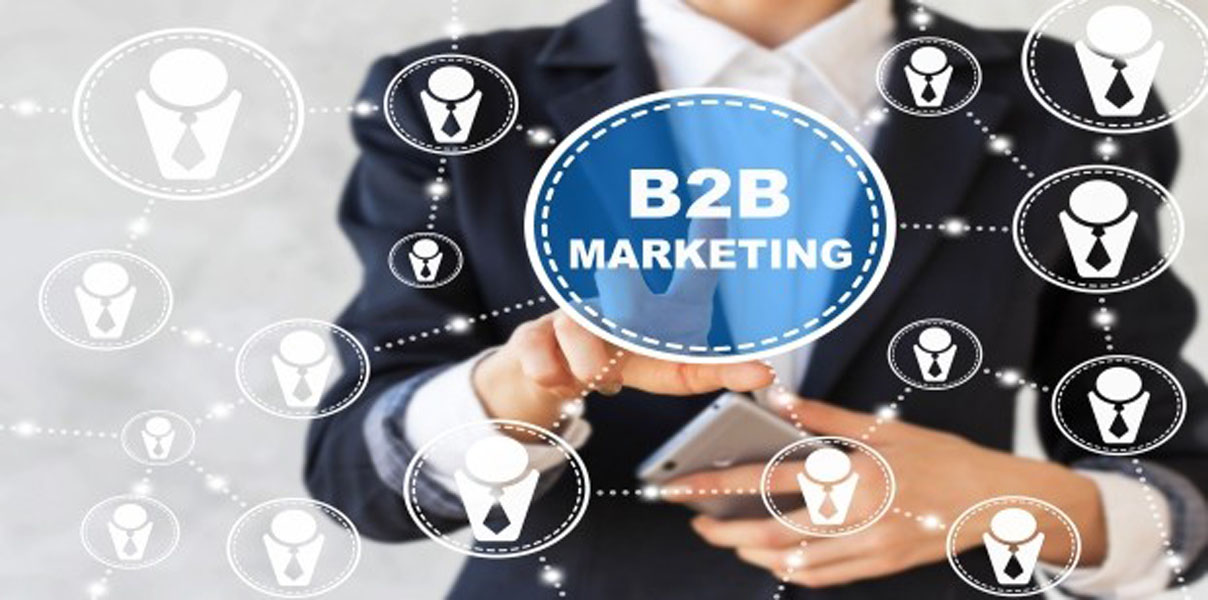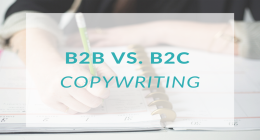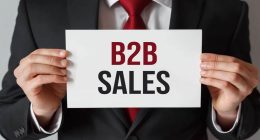Lead generation is often thought of as the end goal of B2B marketing. But the idea of ”performance branding” offers a more balanced approach and is key to long-term success.
The B2B customer journey is more complex than ever before. It has evolved to include many interaction points throughout the marketing funnel. But how can marketers get the most out of each phase and achieve the perfect balance between short-term sales activation and long-term brand exposure? CMOs in the B2B category have plenty of research to advise on the more tactical, short-term, narrow end of the marketing funnel. They place a lot of emphasis on targeting and performance marketing strategies because they are so easy to track.
However, this focus is likely wrong. Afiya Addison, head of market engagement at the B2B Institute, a think tank at LinkedIn, says: “Lead generation marketers have dominated the B2B marketing landscape for the last decade by focusing primarily on short-term outcomes – generating sales leads – and positioning marketing as an exact science, eliminating all waste and tying every measure to financial success.
But this focus on lead generation ignores the importance of brand building to create demand for products and services in the minds of buyers. This should not be forgotten, as the 95-5 rule makes it clear that 95% of buyers in a category are not “in the market” for your goods or services at any given time. As a result, lead generation only captures a fraction of the 5% of buyers that are “in market.” The advice for marketers is clear: Rather than basing your B2B marketing strategy on lead generation, optimize your campaigns to stimulate “category entry points” throughout the funnel. Category entry points are a term coined by Ehrenberg-Bass Institute professor Jenny Romaniuk that “are the cues category buyers use to access their memories in a purchase situation.”
To generate these leads, marketers must strive to balance lead generation with strong brand messaging. Two distinct types of approaches that require different creative, media, and measurement strategies as customers continue on their journey.
Focus on brand building
There are encouraging signs that B2B marketers are recognizing the need for balance. According to LinkedIn’s recent B2B benchmark study, lead generation (36%) takes up the largest share of B2B budgets, but B2B leaders also allocate budget to brand building (30%) and demand generation (20%).
However, there needs to be more emphasis on the brand-building elements at the top of the funnel. Marketing effectiveness experts Les Binet and Peter Field say in a recent B2B Institute report: “This is the world of performance marketing, incentives, and a lot of digital activity. This kind of tactical activity is good for short-term sales and can generate high ROI.”
But Binet and Field argue that this activation-based marketing is likely not very memorable, its impact is short-lived, and it’s unlikely to drive long-term growth. In contrast, “brand building typically works on an emotional level, creating long-term memories and associations that influence purchasing decisions long after the ad has aired. This makes brand building a key driver of long-term growth and profits.”
In consumer marketing, this balance is optimized at 60% to 40% of spend in favor of brand building. However, Binet and Field’s modeling suggests that in B2B, this should be adjusted to allocate 46% of the budget to brand and 54% to activation, although this will vary by category and context.
Practicing “Performance Branding”
The success of this balanced, full-funnel approach is highlighted by recent advertiser activity on the LinkedIn platform. Fuji Electric has partnered with LinkedIn since 2021 to target B2B buyers in international markets. In one campaign, the company sought to promote its vending machines to retailers around the world using a full-funnel organic and paid media strategy on LinkedIn.
Fuji Electric’s plan was to use the top and mid-funnel to give the brand more entertainment and emotional appeal by sharing interesting facts about the history of the vending business. The company then created product-focused content on how retailers can use vending machines to grow their business.
The brand also used bottom-funnel marketing to capture leads through targeting, rotating specific ad formats to capture buyer information, and retargeting users who previously interacted with the ad to drive conversions. The campaign achieved both higher brand engagement and click-through rates. Another example is customer loyalty and engagement platform CleverTap. They turned to LinkedIn to overcome the challenges of building brand awareness and gaining access to new audiences. They built a pipeline of sales-qualified leads by targeting the most relevant audiences and leveraged the LinkedIn algorithm to maximize organic reach and convert leads into conversions.
The solution included a multi-product strategy using LinkedIn ad formats such as sponsored content, dynamic ads, and InMails to deliver content relevant to market segmentation and the customer lifecycle.
CleverTap was also able to reach more professionals similar to their “ideal customers” using Matched Audiences and encourage the use of industry-related hashtags to reach a wider audience. At the same time, they used sponsored InMails to nurture leads on the same platform where they entered the funnel. Each of these campaigns, and many others on LinkedIn, highlight the huge potential of “performance branding” – branding that drives high lead generation and subsequent sales.
This full-funnel approach engages the entire shopper journey and has proven successful across a variety of categories. Sophisticated rather than complex, performance branding takes B2B marketing far beyond measuring clicks and delivers results for marketers in both the short and long term.









